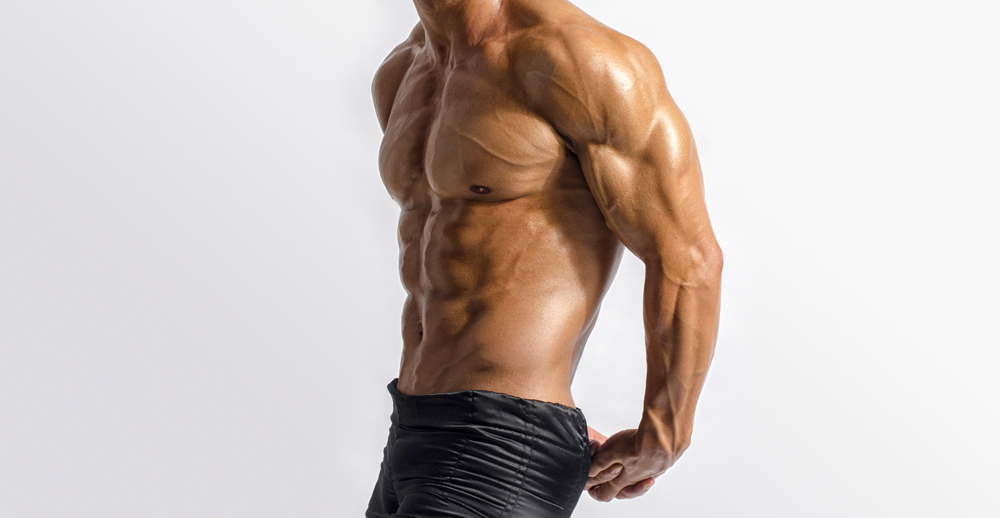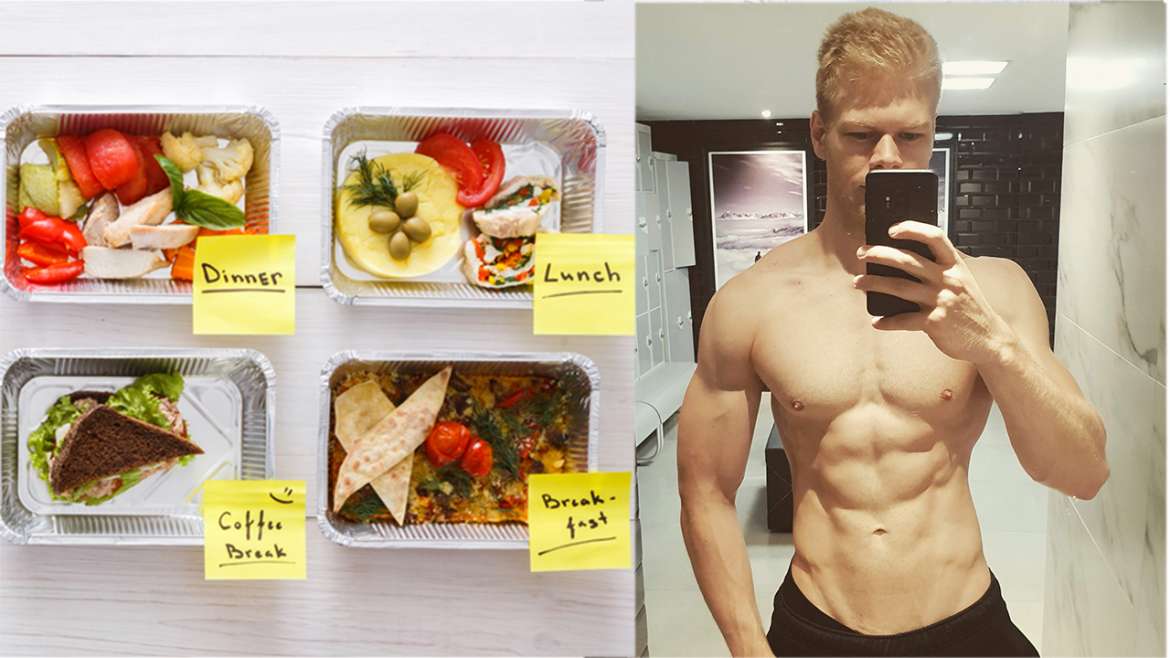Want To Learn How To Create A Bodybuilding Cutting Diet Plan That Is Based On Science And Proven To Get You Results? Read On…

If you have built a solid base of lean muscle mass, then chances are you also gained some extra fat. There is nothing wrong with that. In fact, it’s a lot easier for your body to grow muscle when you are at a calorie surplus. But now that you want to lose the extra fat, how do you come up with a bodybuilding cutting diet that will lower your body fat percentage while preserving all your hard-earned muscle gains?
The most important thing you need to understand is that there is a big difference between “losing weight” and “losing body fat”. The former is a lot easier than the latter. If you cut you calorie intake in half today, you would definitely lose a lot of weight fast, however much of that loss would consist of lean muscle.
The science behind simple weight loss is pretty straightforward: It’s calories in vs. calories out.
This means that how much you eat will be a lot more important than what you eat. Unfortunately, the rules for losing body fat are little more complicated. Not only do you need to maintain a negative energy balance, but you have to do so with the right balance of macronutrients.
When it comes to a successful bodybuilding cutting diet, what you eat does matter! To give you a clear picture of what is necessary, let’s go through the most important aspects of your cutting diet plan step by step.
Step 1 – Cutting Diet Plan: Create A Calorie Deficit
As said before, a calorie deficit is crucial for any type of weight loss. It is achieved by consuming less energy than your body expends on a daily basis. Introducing a calorie deficit is fairly simple and can be summarized like this:
1. Calculate your Total Daily Energy Expenditure (TDEE)
2. Subtract a certain percentage from your TDEE to create a moderate calorie deficit for your bodybuilding cutting diet
3. Reach this calorie count by eating (mostly) healthy foods
The simplest method of calculating your total daily energy expenditure (TDEE) is by using a TDEE Calculator such as this one. It will ask you for your age, weight, height and weekly exercise to determine how many calories you burn per day. While the result will not be 100% accurate – since we all have different metabolisms and genetics – it will give you a good idea of how many calories you need to consume in order to maintain your current weight.
Once you have calculated your TDEE, you will probably ask yourself by how much you need to subtract to reach the optimal calorie deficit. Unfortunately, there is a lot of contradictory information about his on the internet and I understand how this can easily be confusing.
In general, there are three classifications of calorie deficits:
Small: 10-15% below TDEE
Moderate: 20-25% below TDEE
Large: more than 25% below TDEE
With this in mind, there are some sources that will recommend a small deficit and some that will recommend a moderate one (very few recommend a large deficit). The argument for a small deficit is usually that it will lead to less loss of fat-free mass, however studies such as this one have shown that larger calorie deficits don’t necessarily mean more muscle mass will be lost.
Thus, if your goal is to lose body fat fast, a moderate deficit of 20% below TDEE will probably be your best option. However, for someone who is already quite lean and has a fast metabolism, a smaller deficit will most likely show similar results, while at the same time sacrificing less strength.
Step 2 – Cutting Diet Plan: Increase Protein Intake
Once you are in calorie deficit territory, you want to adjust your diet to be high in protein. Study after study has proven that losing fat without losing muscle is all about consuming enough protein every day.
How much exactly?
Even though the old advice of taking 1 gram of protein per pound of body weight might seem a lot like bro-science, it is actually fairly accurate. If your cut involves a larger calorie deficit, you might even want to go with 1.2 grams of protein (although usually 1 gram should be enough).
Make sure to reach this by eating quality and protein-rich foods such as fish, chicken breast or beans. Supplements will definitely make your life easier, but you shouldn’t use them as your one and only source of protein.
Step 3 – Cutting Diet Plan: Don’t Forget Pre- And Post-Workout Nutrition
I already covered how much and what foods you should eat. While the when isn’t nearly as important, you should watch what you eat before and after you exercise. This holds true for any diet – not just a cutting diet – but should be remembered in order to get the most out of your workout.
Without going into too much detail, you should consume the following amounts of protein and carbs to optimize muscle recovery & growth while at the same time minimizing muscle damage. Based on Alan Aragon’s research review:
If you can, eat a balanced meal with 0.2 – 0.25 g/lbs of your target bodyweight (for both carbs and protein) around one hour before your workout. In case your last meal lies more than two hours prior to training, consume liquid or semi-liquid protein and carbs (also with 0.2 – 0.25 g/lbs of your target bodyweight). The liquid will be more easily digested allowing your body to absorb nutrients faster.
Pre- and post-workout meals shouldn’t be separated by more than 3–4 hours. For your post exercise meal use the same protein and carbohydrate measurements as for the pre-exercise meal.
Step 4 – Cutting Diet Plan: Try Calorie Cycling, But Don’t Rely On It
Calorie cycling is a popular strategy where you eat more calories on workout days and fewer calories on rest days, while staying at a long-term calorie deficit (e.g. measured over one week). The logic behind this strategy is to maximize strength and recovery on the days you exercise, while providing your body with fewer calories when less energy is expended (= rest days).
So, does it work?
Unfortunately, there has been done very little clinical research conducted on calorie cycling. Much praise is based on anecdotal evidence from advanced bodybuilders, which might not translate to the average trainee, let alone someone starting out on their fitness journey. However, there is also no inherent flaw in calorie cycling which is why it’s really up to you whether or not you want to to try it out.
If you feel like adding another aspect to your diet, go for it. It will make diet planning a little more complicated, but the psychological benefit of eating more on workout days can make the change more tolerable.
Cutting Diet Plan – Summary:
- As with all diets designed to lose body weight, a calorie deficit is essential
- To minimize muscle loss, increase protein / follow a high protein diet
- Remember eat balanced pre- and post-workout meals no more than 3 – 4 hours apart from each other
- Optional: Calorie cycling for more strength on workout days



